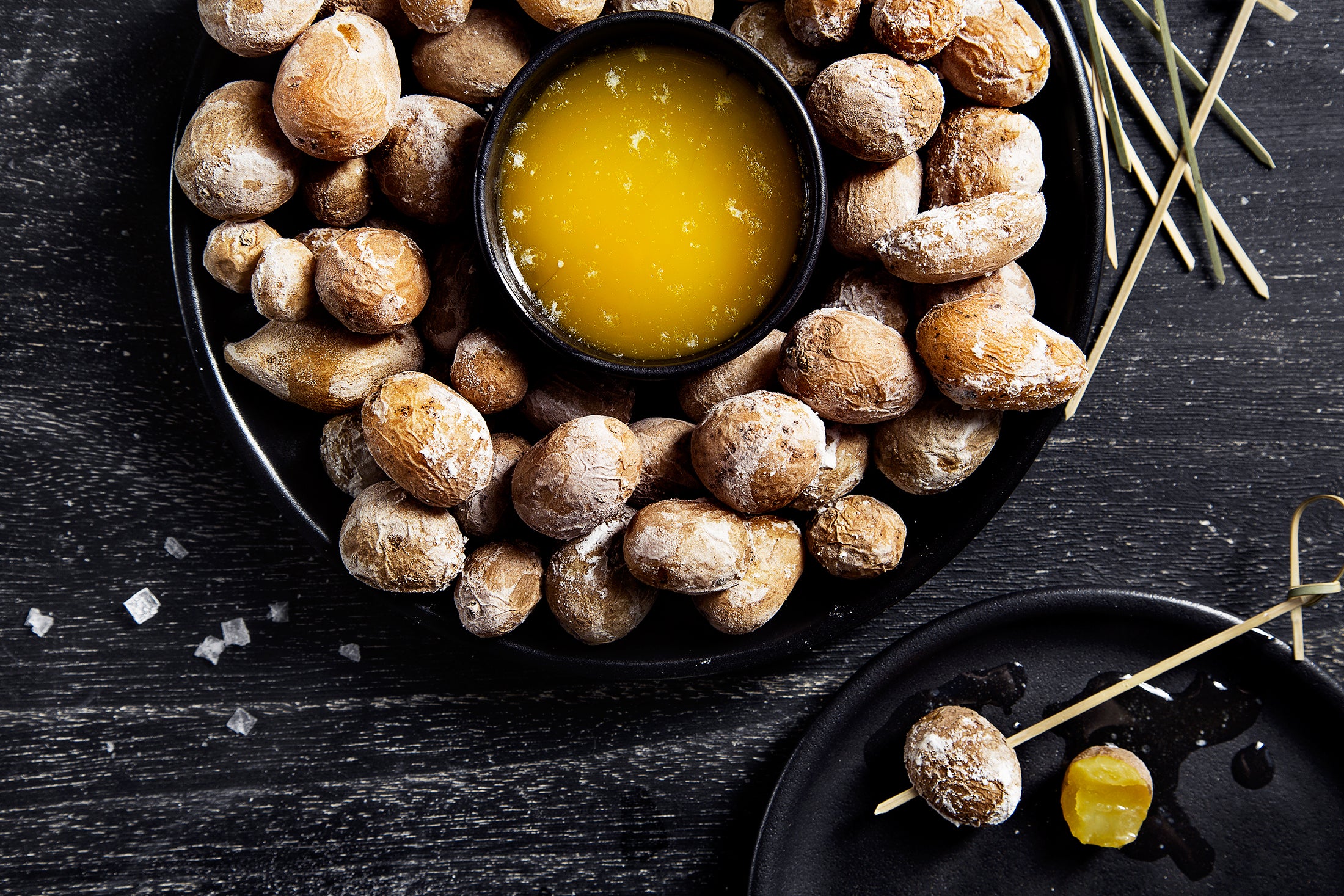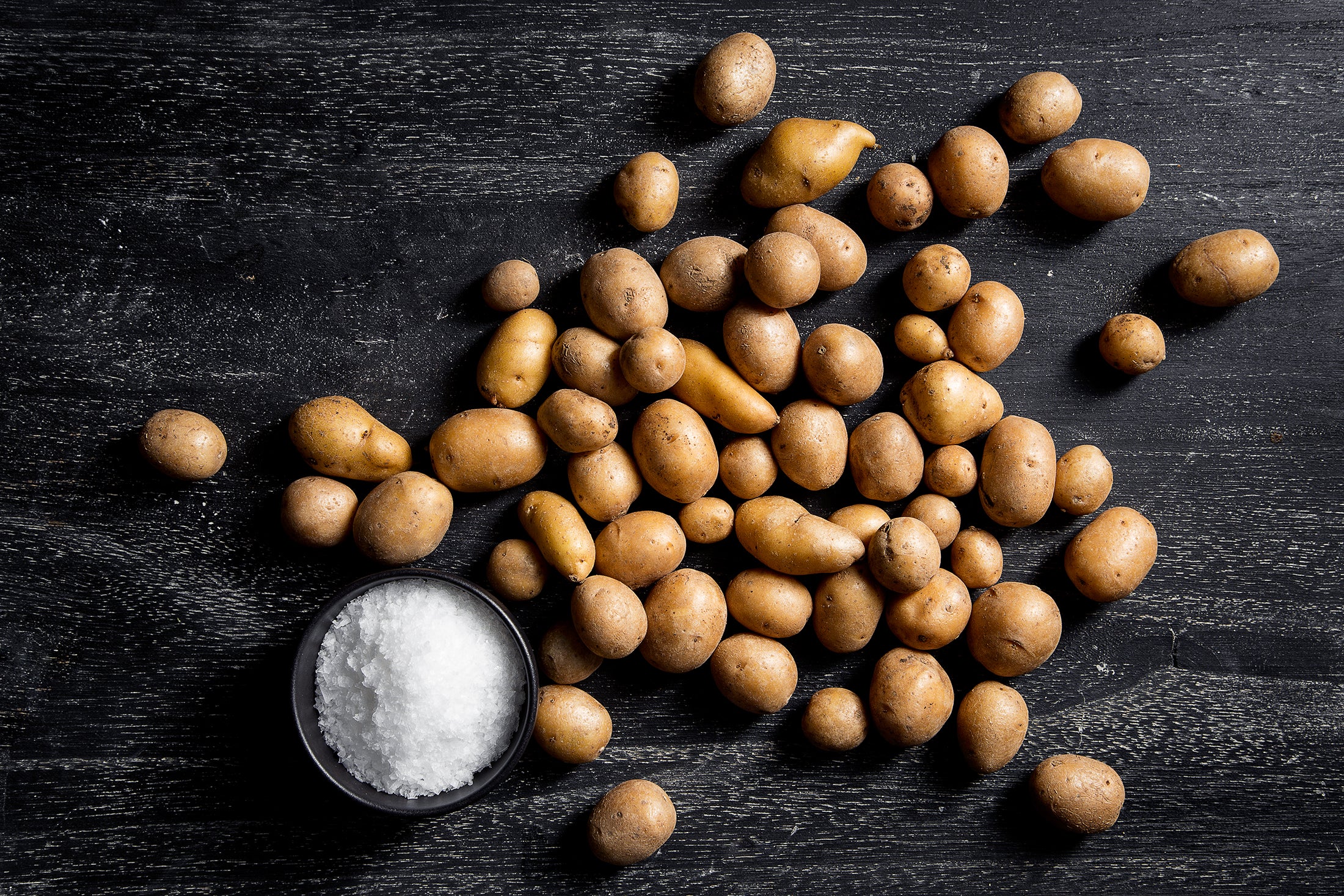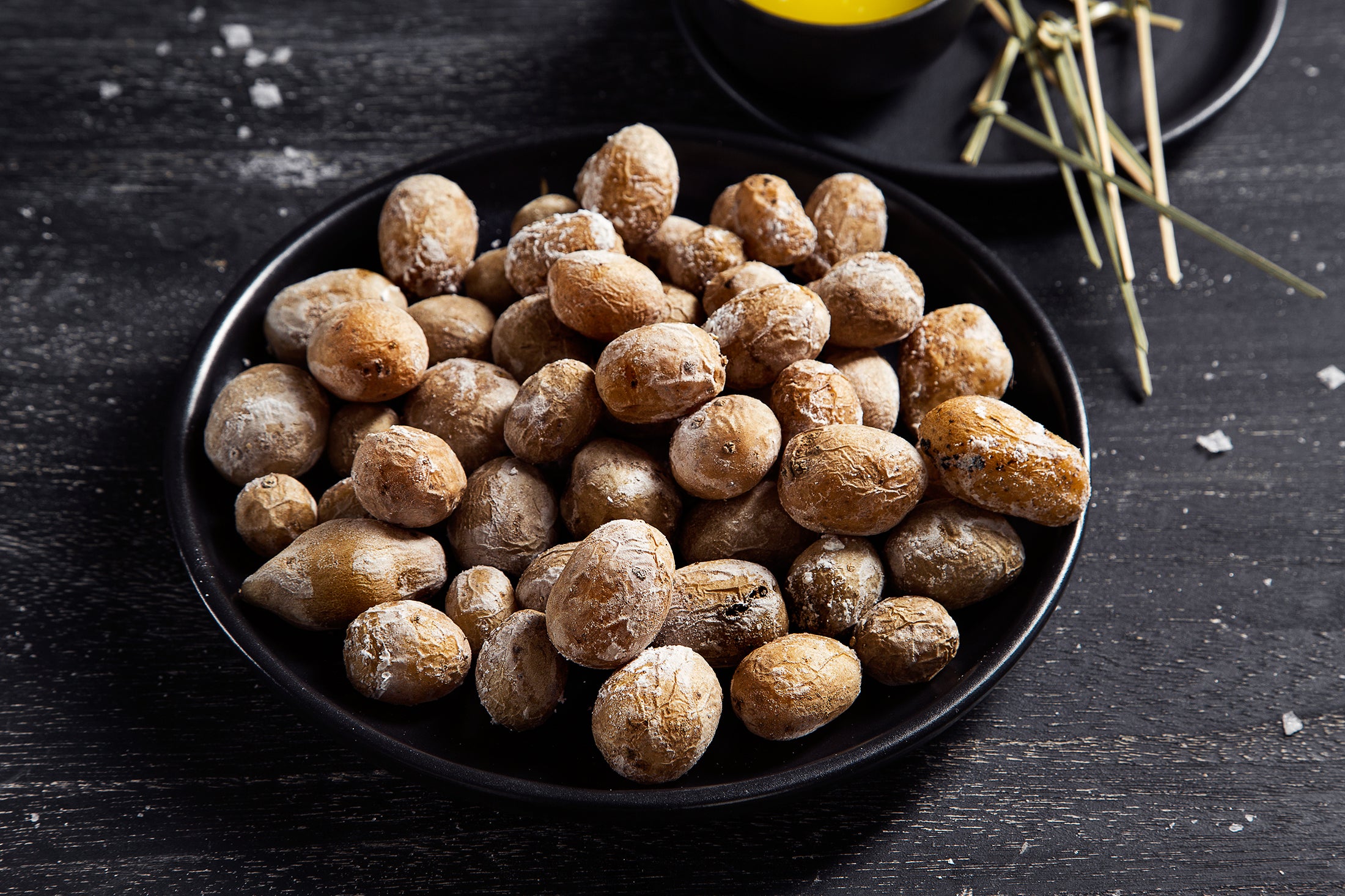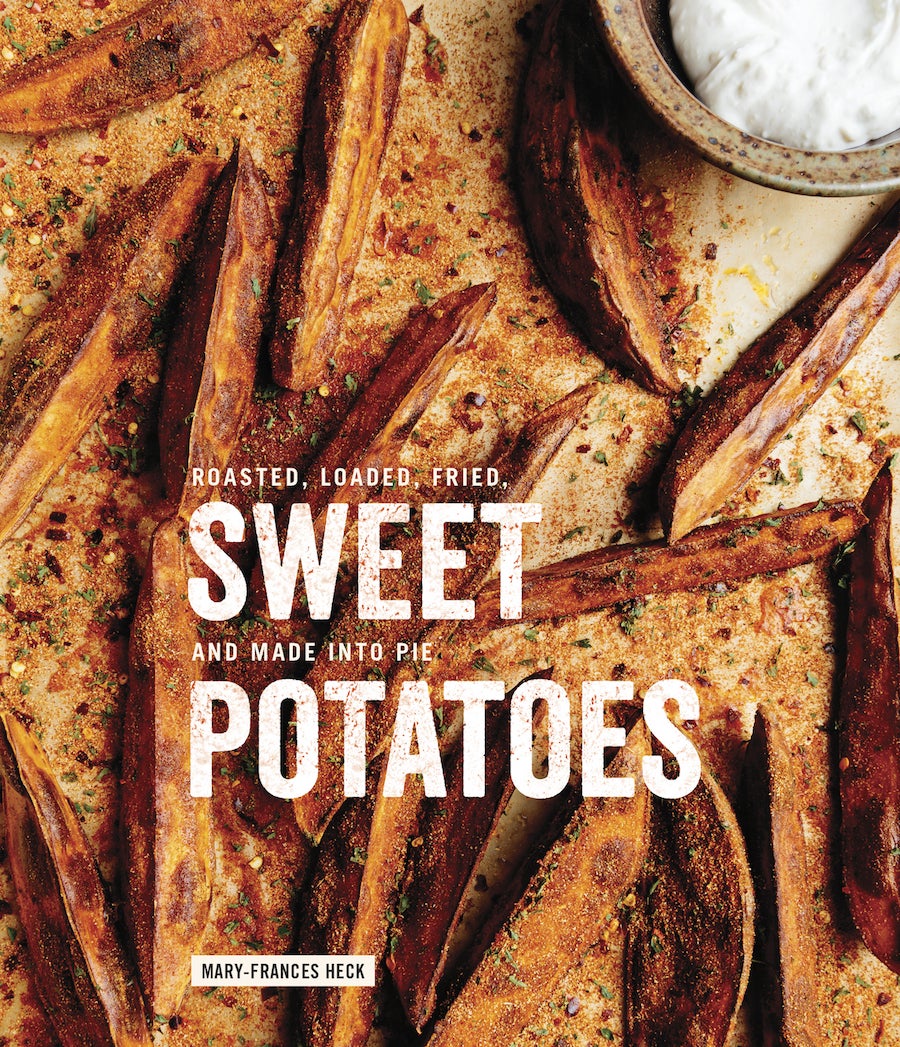
These salt-encrusted spuds are usually attributed to western New York, but the unusual cooking method has been used for hundreds of years in some corners of the world.
The first time I saw salt potatoes prepared, at a backyard barbecue in upstate New York, I was unimpressed, despite the feverish excitement of the gathered locals. My host had purchased a bag of Hinerwadel’s Salt Potatoes at Wegman’s, a local grocery chain, and as far as I could tell, it was just a five-pound bag of thin-skinned new potatoes with a 12-ounce sack of salt along for the ride. After pouring all of the salt (over 2 cups) into a pot with the potatoes and enough water to cover, it was set on the stove to boil. As the potatoes cooked, vigorously simmering for 20 minutes, droplets of the thick brine bubbled from the pot and salt crystalized on the handles of the pot and surrounding burners. The already muggy kitchen became uncomfortably steamy. I love potatoes more than the next person, but salt potatoes seemed like a mess—and the unusual, albeit simple, cooking method seemed like we would be left with unpalatably salty potatoes.
Once tender, the potatoes were unceremoniously drained in a colander. Steam rose, and after a few minutes, as their skins dried, the magic of cooking in brine was revealed: a thin layer of crystalized salt created a sparkly dust on the tan potato skins. The potatoes were dumped back into the salt-crusted pot and set on the table with melted sweet cream butter.
Individually dunked in butter and eaten as a finger food, the simple genius of salt potatoes became apparent. The brine boils at a higher temperature than water, so the potato flesh steams inside the skin, which acts as a barrier to the salty brine. The steamed flesh is at once fluffy and creamy, and the dried salt on the skin seasons each bite perfectly.

Salt potatoes gained popularity in the mid-1800s, when Syracuse was a hub of salt production for the United States. Saline wells and water from Onondaga Lake, which was full of salt deposits from an ancient inland sea, bred a thriving salt industry, with a workforce made up of European immigrants. Long days and nights spent working in the “boiling blocks”—the warehouses equipped with furnaces and iron cauldrons for reducing brine to powdered salt—meant lunch was sacks of potatoes cooked in the vats of boiling brine. Necessity is the mother of invention, but did these salt workers actually invent the method of cooking potatoes in brine?
A few months ago, I was paging through chef Katie Button’s cookbook, Cúrate. I came across a recipe for salt potatoes, or papas arrugadas—literally “wrinkly potatoes,” a descriptive name nodding toward the salt-sealed skin that wrinkles as it dries. The photo looked like an extra salty version of Syracuse salt potatoes, served with a chimichurri-esque mojo verde. Instead of cooking in terrestrial brine, these potatoes (which came out of the Canary Islands sometime in the early 17th century) were originally cooked in sea water, which is less salty than Syracuse-style brine. So instead of draining the potatoes, some of the cooking water is poured off once the potatoes are tender. The pot returns to high heat until the remaining water evaporates, leaving a fine salt powder on the potatoes’ skins and the bottom of the pan.

A little more research guided me to Colombian papa salada, which falls somewhere between the Syracusian and Canarian versions. From the salt mining town of Zipaquira, about 25 miles north of Bogotá, papa salada are cooked with the edible rock salt produced by the halite mines. According to food stylist Mariana Velasquez, who grew up in Bogotá, this unremarkable salt is dissolved in a clay or aluminum pot set over a wood-fired stove. The key to the dish is using a specific, waxy variety of freshly dug potato and about one ounce of salt per pound of potatoes. Their waxiness helps maintain the potatoes’ structure as they undergo a long boil. The potatoes are boiled until the brine has completely evaporated, and the cooked flesh is denser than that of a Syracuse salt potato. The salt scorches on the bottom of the pan and mingles with the wood fire to add a layer of smoky flavor to the papa salada. Served at weekend luncheon barbecues, they are accompanied by grilled meat, a simple guacamole of mashed avocado seasoned with lemon juice, cilantro, and salt, and aji, a spicy green sauce of cilantro, scallions, green chiles, garlic, and vinegar.
Each of these salt-potato birthplaces has developed recipes that bring out the best in their regional ingredients, but my favorite result comes from marrying these styles and improvising based on the ingredients I have (as neither an island dweller nor a miner). Since salt is the star of this dish, you will taste all of its mineral flavors, so choose a delicious one, like sel gris or Maldon. As for the potatoes, choose freshly dug creamers or fingerlings, and serve them with an herby green sauce or melted butter.
